Tony Eldridge's Blog, page 2
November 21, 2013
Lessons From Promoting the Book The Kennedy Detail
Some book promotion campaigns serve as a reminder of what it's all about - sharing our stories. On the 50th anniversary of President John F. Kennedy's assassination, Author Marketing Experts CEO Penny Sansevieri talks about what she learned while promoting the book The Kennedy Detail three years ago. She says: "if we are lucky enough to touch a soul and share a smile, that's bigger than any number a royalty check can offer." Read the rest of the post here: http://www.amarketingexpert.com/working-former-kennedy-secret-service/
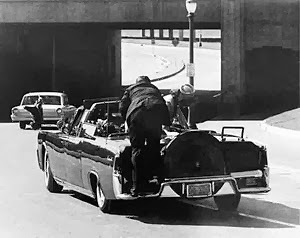 Altgens’ final photo taken just after the fatal shot shows Jackie Kennedy and Secret Service agent Clint Hill on the back of the Presidential limousine. (Photo credit: Wikipedia)
Altgens’ final photo taken just after the fatal shot shows Jackie Kennedy and Secret Service agent Clint Hill on the back of the Presidential limousine. (Photo credit: Wikipedia)







Published on November 21, 2013 21:35
November 17, 2013
Understanding Book Distribution Part 2: Direct Sales of Ebooks
Authors such as Ryan Estrada, Andrew Hyde ( This Book Is About Travel ), and Nathan Barry ( App Design Book ) sell their ebooks via Gumroad. They placed their files on the service and added the link to their websites. People can click on the link, pay for the file, and then download it. The authors pay a transaction and hosting fee to Gumroad.
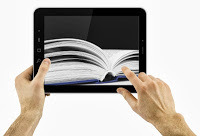
This method is the simplest, most direct, and possibly offers the highest profit per book. However, it requires the ability to drive people to a website, compared to online resellers who already have traffic. You’ll also need hosting, payment, and customer-service functionality. Other companies that provide this type of service are E-Junkie and ClickBank. Ganxy is a company that provides an ebook-focused product.
Pros:
Direct and immediate control. These companies are big hard disks in the sky with order processing. You make your decisions about pricing and revisions, and they execute.
High profits per book. These companies don’t do more than host your file and handle transactions. Therefore, their costs are lower, and you can make the most money per copy through them.
Cons:
Marketing burden. There’s always a catch! You have total control and can make the most profit per book, but the onus is upon you to get people to your website or to click to buy your ebook.
Reduced synergy. These websites don’t have anything like sales rankings and the “Customers Who Bought This Item Also Bought” synergistic promotion.
Reduced opportunities for affiliate fees. The Amazon Affiliate program enables authors to earn fees from traffic generated by their marketing efforts. For example, after you send someone to your book’s page on Amazon, if that person buys a Samsung TV from Amazon, you can make an affiliate fee. Gumroad and E-Junkie don’t pay affiliate fees, though ClickBank does.
Best suited for only selling the PDF version. These sites can sell any file format that you upload, but this doesn’t mean that your readers will know what format to buy for their reader app and how to install your book. Do you want to help a person trying to read a MOBI file (more on formats later) in iBooks?
Before you go nuts selling books directly, check on sales-tax issues. This applies to US authors who sell to people in the same state of residence—authors outside the United States should check with a tax specialist in their country. Resellers such as Amazon or Apple automatically handle state sales-tax issues for you. When you sell printed books directly to people in your state, it’s your responsibility to report and record taxes.
In most states, the sale of digital goods such as ebooks is not subject to sales tax as long as there is no physical product involved and the transaction/experience is purely digital (online marketing, online distribution). In some states, engaging in physical marketing of a digital product (for example, flyers and meet-the-author events) creates a condition where digital sales may be subject to sales tax.
This issue is a hot and fluid topic in many states because states are looking for alternative sources of revenue. Before you start selling digital copies of your book directly to individuals, you should contact your state’s department of revenue or a tax attorney and ask whether digital sales are subject to sales tax.
Guy Kawasaki has written 12 books, 10 of which were traditionally published. His newest book is APE: Author, Publisher, Entrepreneur - How to Publish a Book, which helps people understand how and why to self-publish.
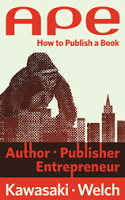
APE: Author, Publisher, Entrepreneur - How to Publish a Book, by Guy Kawasaki and Shawn Welch, is available as an eBook ($9.99) and in paperback ($24.99). Visit http://apethebook.com/








Published on November 17, 2013 18:47
November 13, 2013
Increase Your Amazon Book Sales by Enhancing Your Book Headline & Description
There's a lot you can do on your Amazon book page to help your book stand out. These easy updates to your book description, for instance. All you have to do is create a headline and description to showcase your book, catch readers' eyes and sell your book! This step by step video will show what to do!








Published on November 13, 2013 12:57
November 10, 2013
Understanding Book Distribution (Part 1: Digital)
Channels of Distribution
This chapter provides an overview of the four main digital and print distribution channels. They are online ebook resellers (digital), direct sales (digital), author-services companies (digital and print), and print-on-demand (print). The chapters after this overview explain each channel in detail.

The self-publishing ecosystem is idiosyncratic, illogical, and fragmented. Apple, Amazon, Google, Adobe, Microsoft, and other self-publishing vendors try to optimize products and processes for themselves—creating a cross between a junkyard and a swap meet for authors.
The following decision matrix will help you clarify your options. It begins with two fundamental questions:
What kind of book do you want to publish?
Do you need help getting professional editing, cover design, layout design, and production?
The answers to these questions will help you decide on which channels of distribution to use.
Amanda Hocking is the heroine of self-publishing. She spent years pitching her vampire-romance novels to traditional publishers with no success. In April 2010 she learned that an exhibition about Jim Henson, the creator of the Muppets, was coming to Chicago. But Amanda, a Muppets fan, had no money to make the trip.
Undaunted, Hocking decided to self-publish her novels with Kindle Direct Publishing to pay for the $300 trip. She started with My Blood Approves , and by October 2010, she made over $20,000. Over the next twenty months, she made $2.5 million. The rest, as the saying goes, is history.
Hocking is not the norm for self-published authors. Many stories about self-publishing cite her because her experience is unusual, not typical. Still, people need heroes for inspiration and for proof that success is possible. Not every entrepreneur is going to start the next Apple, either, but it’s great to know that two guys in a garage started the most valuable company in the world.
Amazon (Kindle Direct Publishing), Apple (iBookstore), Barnes & Noble (Nook), Google (Google Play), and Kobo are the major online ebook resellers. For most self-published authors, they represent the easiest and most lucrative way to sell books. You may never need any distribution channel other than online ebook resellers.
Pros:
Inexpensive. All you need to self-publish an ebook is a computer, word processor, and Internet access. If you start distribution through other channels, you may need more professional tools, but you can worry about this later.
Easy. Fiction writers can click on an “Upload” button, find their Word file, transmit it, wait for the reseller to process the file, and start selling in a few days. This isn’t true for complicated nonfiction books because of file-conversion issues, but it is possible for most fiction authors.
Quick. You can convert your book from manuscript to market in less than a week. The best case, Kindle Direct Publishing, prides itself on a forty-eight-hour turnaround. Amazon and Apple also enable you to launch your non-translated book in dozens of countries at the same time.
Lucrative. You can make up to 70 percent of the selling price of an ebook from online resellers. Making $2 on a $3 book is a sweet deal if you can achieve a large volume.
Cons:
Limited reach. You will miss people who prefer printed books. This is especially true for nonfiction books. For example, many engineers still prefer buying a printed book for technical topics such as iOS development, and many photography fans would rather own a printed book than an ebook.
Less “real.” We’re not Luddites or book snobs, but we still think that hefting, smelling, and autographing a printed book is special. Later we’ll explain ways to distribute both ebook and printed versions of your book, but if you only publish ebooks, you will miss this feeling.

Guy Kawasaki has written 12 books, 10 of which were traditionally published. His newest book is APE: Author, Publisher, Entrepreneur - How to Publish a Book, which helps people understand how and why to self-publish.
APE: Author, Publisher, Entrepreneur - How to Publish a Book, by Guy Kawasaki and Shawn Welch, is available as an eBook ($9.99) and in paperback ($24.99). Visit http://apethebook.com/








Published on November 10, 2013 19:33
November 7, 2013
How to Get a Celebrity to Endorse Your Book

Do you think your book is worth a celebrity endorsement? A famous face can certainly help book sales, but it takes planning and careful followup to receive that sought-after book blurb.
A book publicist offers some tips to help you navigate the process: http://thesinglelibrarian.wordpress.com/2013/11/07/guest-post-shelf-life-tour/








Published on November 07, 2013 19:14
November 5, 2013
Get More Visitors to Your Site With Hashtags
By now you've noticed #hashtags online - at this point, you'll find them in use on nearly every social network. When used properly, hashtags are great for SEO and attracting more visitors to your website or blog. Learn the basic hashtags dos and dont's - along with tips for developing your own hashtags.








Published on November 05, 2013 19:08
November 3, 2013
Book Cover Power Tip
This chapter helps you obtain an attractive and effective cover for your book. People look at faces and make instant judgments about likeability, trustworthiness, and credibility. Think of your book’s cover as its face. People make the same decisions based on it.
Power tip: leave enough space on the cover of your printed book for autographing. I stumbled upon this idea with Enchantment. The reasons to do this are:

· Speed. It’s faster to sign a cover than an inside page. When there’s a line of people waiting for your autograph, every second counts.
· Visibility. One reason people want an autographed book is to show that you met the author. A book that’s autographed on the outside is more effective for this purpose.
· Logistics. You can send autographed covers to readers for approximately $2 each. These fans can replace their existing cover with the autographed one, and they are more likely to show off their covers to friends and relatives.
People who wanted an autographed Enchantment cover completed an online form and posted their picture with the book (or their tablet showing the cover) on Google+ or Facebook. My calculation was that it was worth $2 for people to provide social proof that they bought my book. Since my royalty was a little more than $2 on each copy, I broke even on each book.
I wish I could tell you that the cover was designed with this in mind, but it’s not true. The cover was in place, and then I saw a way to autograph books faster and to engage with my readers.
One more power tip about covers and autographing: bring a pad of Post-it notes with you and ask people to write the name they’d like you to use on the cover. This will also make autographing go faster—especially in a noisy environment.
Covers in Context
Take a look at the Book Cover Archive; it’s a collection of more than 1,200 book covers. Seeing row upon row of covers is a good exercise. When you double-click on a cover to see it in a larger size, it probably looks good. However, in the real-world context of multiple postage-stamp-size covers on a website, many do not work. If nothing else, you can pick out covers that you like to show to your designer.
Summary
Not to get too metaphysical, but a cover is a window into the soul of your book. In one quick glance, it needs to tell the story of your book and attract people to want to read it. Unless you’re a professional, hire a professional to create a great cover because, in spite of how the old saying goes, you can judge a book by its cover. Or at very least, people will judge a book by its cover.

Guy Kawasaki has written 12 books, 10 of which were traditionally published. His newest book is APE: Author, Publisher, Entrepreneur - How to Publish a Book, which helps people understand how and why to self-publish.
APE: Author, Publisher, Entrepreneur - How to Publish a Book, by Guy Kawasaki and Shawn Welch, is available as an eBook ($9.99) and in paperback ($24.99). Visit http://apethebook.com/








Published on November 03, 2013 19:39
October 31, 2013
Blog Carnival: Marketing Tips for Authors - November 1, 2013
Welcome to the November 1, 2013 edition of marketing tips for
authors. We've got a nice mix of posts this month, on topics including book
marketing, social media, and author tips. Thank you to all of the contributors.
Author Tips
Markeyus presents How to write and publish a book in three steps posted
at Live2Conquer.
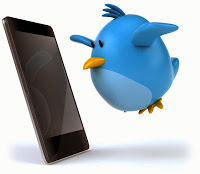
Book Marketing
Kimberley Grabas presents 14 Things About Building a Blog Audience That You Think
Are True (But Aren't) posted at Your
Writer Platform, saying, "Some well-known ‘truths’ about
building a blog audience are like urban legends. If they go unchallenged, the
truth becomes ambiguous, or worse, these inaccurate concepts become the
conventional wisdom of the day, passed as fact from one rookie blogger to the
next. Let’s dispel some of these non-truths, so that you can begin to build a
blog audience without folklore getting in the way."
Book Promotion
Erica Verrillo presents Publishing ... and Other Forms of Insanity: Everything I
Did Wrong, Part 2: Designing An Author's Website posted at Publishing
... and Other Forms of Insanity, saying, "It is astounding how
many authors don't have websites. In this day and age a website is the
equivalent of a business card. Without one, you may as well be invisible."
Social Media
Randy Ross presents Social Media for Writers: Confusing Twitter Terms in
Plain English posted at The
Loneliest Planet by Randy Ross, saying, "Confused by even the
most basic Twitter terms? Me, too -- and I've been using Twitter for five
years. Twitter Help was only of modest help. This article took several hours to
piece together. Comments and corrections appreciated. Also, the end of the
article includes links to sources I used."
That concludes this edition. Submit your blog article to the
next edition of marketing tips for authors using our carnival submission form. Past posts and future hosts can
be found on our blog carnival index page.








Published on October 31, 2013 19:48
October 27, 2013
How to Get An Effective Book Cover
This chapter helps you obtain an attractive and effective cover for your book. People look at faces and make instant judgments about likeability, trustworthiness, and credibility. Think of your book’s cover as its face. People make the same decisions based on it.
Traditional publishers usually create a handful of designs and then ram them down the throat of authors. There’s good news and bad news for self-publishers. The good news is that you have total control over your cover; the bad news is you have total responsibility for your cover.

Covers 101
Your cover must stand out in a sea of postage-stamp-size covers on websites. A cover that looks great in a six-by-nine-inch printed format won’t necessarily work on the Amazon, Apple, Barnes & Noble, and Kobo website.
Here are guidelines for a cover that will make people want to click on it:
• Simple, big, and bright. Standing out on a web page full of covers requires using big type (60 points or more), simple graphics, and bright, high-contrast colors.
• Arresting. People are flipping through web pages, scrolling through lists, and making split-second decisions. Your cover has to stop them and make them click on it.
• Logical. Your cover should match your book’s genre. For example, a young-adult fantasy book’s cover should not look like a management tome. Look at the covers of other books in your genre for ideas.
• Focused. A good cover provides a focal point for people’s attention. A dominant graphic or clip of text should leave no doubt about what the most important design element is.
• Informative. A good cover answers two basic questions: What is the name of the book? Who wrote the book? The graphic design should attract attention, and your text should satisfy the need for this basic information.
You could produce two versions of your cover: one for your ebook that is simplified to work in the postage-size context and one for your print version that is more complex. (Hat-tip to Paul Richard for this idea.)
Paths to Coverdom
Now you know the goals for your cover, and the question is how to achieve them. There are three paths:
• Design it yourself. The odds of being a good writer, copyeditor, and cover designer are zero. However, if you are a good designer, you can do it yourself. If you’re not, you’ll be OK as long as you can identify what is a good cover.
• Use crowdsourcing. I used a site called Crowdspring to design the cover of Enchantment, and I was overjoyed with the result. In the end, I used the idea from the winning entry and another designer executed the design.
However, the design community will give you crap because some members consider crowdsourcing as a form of exploitation. Their objection is that many designers will create designs and only one will get paid. My response is, “Then don’t submit a design.”
Think about this: Have you gotten paid for every word you’ve written? I haven’t. And I give many speeches for free in order to develop business. Some designers believe they should never do anything for free. More power to ’em.
• Find a designer. The third path is to find a designer. Ask for referrals to designers on Google+, Facebook, Twitter, and LinkedIn. Ask the authors of books with covers that you like for referrals too. Most authors are happy to provide referrals because the designer will work harder on the next project for the author. In my case, Ana Frazao designed the What the Plus! cover, and Holly Thomson designed the APE cover, so tell them that I sent you.
Guy Kawasaki has written 12 books, 10 of which were traditionally published. His newest book is APE: Author, Publisher, Entrepreneur - How to Publish a Book, which helps people understand how and why to self-publish.

APE: Author, Publisher, Entrepreneur - How to Publish a Book, by Guy Kawasaki and Shawn Welch, is available as an eBook ($9.99) and in paperback ($24.99). Visit http://apethebook.com/








Published on October 27, 2013 18:30
October 24, 2013
Keep Your Focus When Promoting Your Book
I came across an interesting book publicity blog post the other day, and while the situation seems a little more X-Files than real life, we often hear from authors who get sidetracked with issues that don't help them move forward with their marketing. In this case, the author sees a scam where none exists, but it could be anything that distracts from the big picture. Set goals, develop a marketing plan, and keep moving forward.
Don't let this be you: http://www.thepublicistnovel.com/the-biggest-conspiracy-in-publishing
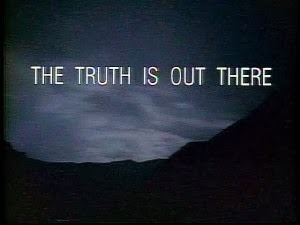








Published on October 24, 2013 22:02



